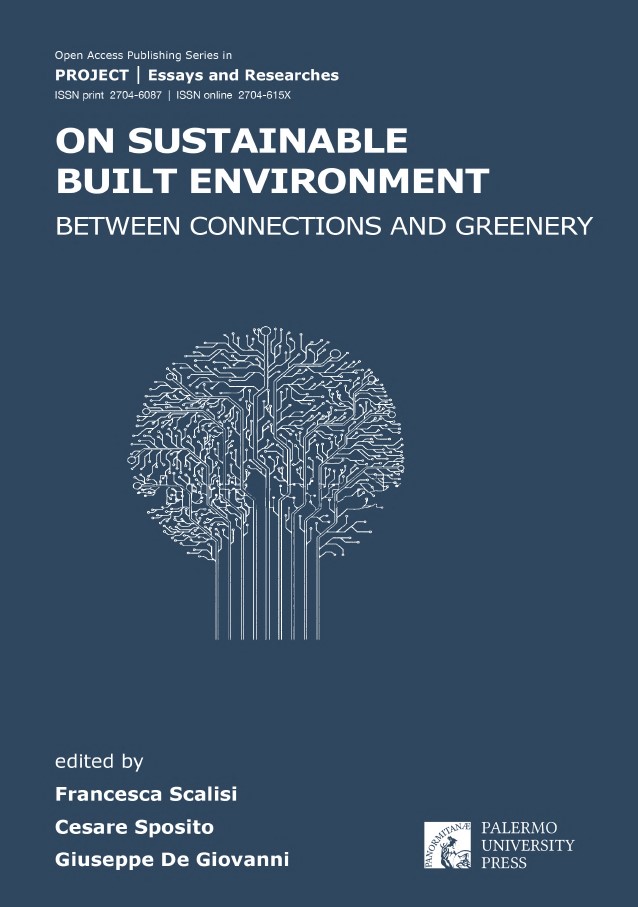
Title
Communication design for health. Territorial and digital networks
DOI
doi.org/ 10.19229/978-88-5509-446-7/7152022
Keywords
territorial network, health and wellness,
mediation, communication design, community ‘empowerment’
Abstract
In the wake of the Covid-19 pandemic emergency, there has been renewed interest in issues related to health, prevention and community well-being. Health communication and the promotion of disease prevention now require a theoretical and design approach that first and foremost requires the identification of appropriate tools to enhance ‘intersectorality,’ ‘collaboration,’ and ‘outreach’ among the different areas of expertise of the well-being and healthcare actors involved in the territory. The aim is to strengthen the process of community ‘empowerment’. This study investigates the communicative strategies suitable for enhancing the physical, virtual and digital relationships among the active presences in the territory, choosing those capable of mediating needs, promoting well-being and building a dialogue between citizens and health facilities, thus finally creating a ‘territorial health network’.
Section
Design | Research & Experimentation
pp. 270-287
Author(s)
Daniela Anna Calabi, Alice Maturo, Marco Quaggiotto
Author(s) Biography
Daniela Anna Calabi is an Associate Professor at the Department of Design of the Politecnico di Milano (Italy). Her research is mainly in the field of communication, with particular reference to the design of perception, atmosphere and identity of territories. Mob. +39 347/42.15.182 | E-mail: daniela.calabi@polimi.it
Alice Maturo is a PhD Candidate in Communication Design, at the School of Design of the Politecnico di Milano (Italy). She conducts research on the issues of accessibility and territorial identity, for the strengthening of community well-being. +39 340/45.78.394 | E-mail: alice.maturo@polimi.it
Marco Quaggiotto is a Researcher at the Department of Design of the Politecnico di Milano (Italy). His research activity is in the field of Communication Design, with a particular focus on digital cartography and the design of digital interfaces for the exploration of complex territories and systems.Mob. +39 347/92.66.407 | E-mail: marco.quaggiotto@polimi.it
References
Eysenbach, G. (2008), “Medicine 2.0 – Social Networking, Collaboration, Participation, Apomediation, and Openness”, in Journal of Medical Internet Research, vol. 10, issue 3, e22, pp. 1-13. [Online] Available at: jmir.org/2008/3/e22/ [Accessed 23 August 2022].
Gaba, D. M. (2004), “The future vision of simulation in health care”, in BMJ Quality & Safety, vol. 13, issue suppl. 1, pp. i2-i10. [Online] Available at: doi.org/10.1136/qshc.2004.009878 [Accessed 23 August 2022].
Greco, G. M. (2016), “On Accessibility as a Human Right, with an Application to Media Accessibility”, in Matamala A. and Orero, P. (eds), Researching Audio Description – New Approaches, Palgrave, pp. 11-33. [Online] Available at: doi.org/10.1057/978-1-137-56917-2_2 [Accessed 23 August 2022].
Kreps, G. L. and Thornton, B. C. (1992), Health communication – Theory & Practice, Prospect Heights, Waveland Press.
Jones, P. H. (2013), Design for care – Innovating healthcare experiences, Rosenfeld Media, Brooklyn (NY). [Online] Available at: rosenfeldmedia.com/books/design-for-care/ [Accessed 23 August 2022].
Ministero della Salute – Direzione Generale della Prevenzione della Salute (2020), Piano Nazionale della Prevenzione 2020-2025. [Online] Available at: salute.gov.it/imgs/C_17_notizie_5029_0_file.pdf [Accessed 23August 2022].
Parrott, R. (2009), Talking about Health – Why Communication Matters, John Wiley & Sons, Hoboken. [Online] Available at: wiley.com/en-us/Talking+about+Health%3A+Why+Communication+Matters-p-9781444310825 [Accessed 23 August 2022].
Piscitelli, D. (2019), First things first – Comunicare le emergenze – Il design per una contemporaneità fragile, ListLab Editore, Milano. [Online] Available at: listlab.eu/catalogo/libri-altre-collane-books-other-series/serie-design-experience/first-things-first/ [Accessed 23 August 2022].
Quaggiotto M. (2017), “Servizi digitali per il territorio urbano – Progettazione integrata per spazi ibridi”, in Bucchetti, V. (ed.), Un’interfaccia per il welfare – Le funzioni sociali del design della comunicazione, FrancoAngeli, Milano, pp. 83-92.
Rappaport, J. (1987), “Terms of empowerment/exemplars of prevention – Toward a theory of community psychology”, in American Journal of Community Psychology, vol. 15, issue 2, pp. 121-144. [Online] Available at: doi.org/10.1007/BF00919275 [Accessed 23 August 2022].
Regionale Emilia-Romagna – Servizio Sanitario Regionale (2015), Piano Regionale della Prevenzione 2021-2025. [Online] Available at: salute.regione.emilia-romagna.it/prp [Accessed 23 August 2022].
WHO – World Health Organization (2021), Health Promotion Glossary of Terms. [Online] Available at: who.int/publications/i/item/9789240038349 [Accessed 23 August 2022].
WHO – World Health Organization (2017), Communicating Risk in Public Health Emergencies – A WHO Guideline for Emergency Risk Communication (ERC) policy and practice, Ginevra. [Online] Available at: apps.who.int/iris/handle/10665/259807 [Accessed 23 August 2022].
WHO – World Health Organization (2014), Health in all policies – Helsinki statement – Framework for country action. [Online] Available at: who.int/publications/i/item/9789241506908 [Accessed 23 August 2022].
Zimmerman, M. A. (2000), “Empowerment Theory – Psychological, Organizational and Community Levels of Analysis”, in Rappaport, J. and Seidman, E. (eds), Handbook of community psychology, Springer, Boston (MA), pp. 43-63. [Online] Available at: doi.org/10.1007/978-1-4615-4193-6_2 [Accessed 23 August 2022].

